 |
 |
 |
 |
 |
 |
| |
 |
|
 |
 |
 |
  |
  |
 |
 |
 |
 |
| PREMIO PRITZKER 2011 | EDUARDO SOUTO DE MOURA
|
|
31 marzo 2011
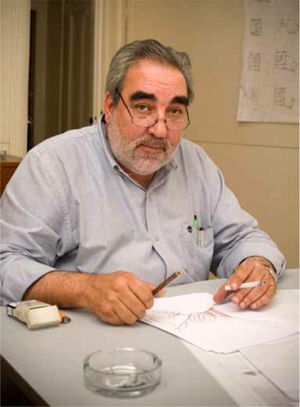 Eduardo Souto de Moura, 58enne architetto portoghese, è stato scelto dalla giuria come vincitore del Pritzker Architecture Prize 2011, come annunciato da Thomas J. Pritzker, presidente della Hyatt Foundation, che sponsorizza il premio. La cerimonia ufficiale di premiazione per quello che viene riconosciuto in tutto il mondo come la più alta onorificenza nel campo dell'architettura avverrà in uno degli edifici classici più belli di Washington, D.C., l'Andrew W. Mellon Auditorium. Eduardo Souto de Moura, 58enne architetto portoghese, è stato scelto dalla giuria come vincitore del Pritzker Architecture Prize 2011, come annunciato da Thomas J. Pritzker, presidente della Hyatt Foundation, che sponsorizza il premio. La cerimonia ufficiale di premiazione per quello che viene riconosciuto in tutto il mondo come la più alta onorificenza nel campo dell'architettura avverrà in uno degli edifici classici più belli di Washington, D.C., l'Andrew W. Mellon Auditorium.
Annunciando la scelta della giuria Pritzker si è così espresso: "Per la seconda volta, nella storia del premio, viene scelto un architetto portoghese. La prima volta fu nel 1992, quando venne premiato Álvaro Siza."
Lo scopo del Pritzker Architecture Prize, fondato nel 1979 dal compianto Jay A. Pritzker e da sua moglie Cindy, è quello di premiare, ogni anno, un architetto vivente le cui opere mostrano una combinazione di talento, visione ed impegno tali da produrre un contributo significativo per l'umanità e per l'ambiente, espresso attraverso l'arte dell'architettura. I vincitori ricevono un premio di 100.000 dollari ed un medaglione di bronzo.
Lord Palumbo, presidente della giuria del premio Pritzker, ha sottolineato dalla sua residenza in Inghilterra con quali motivazioni la giuria sia arrivata alle scelte di quest'anno: "Nelle ultime tre decadi Eduardo Souto de Moura ha prodotto lavori che appartengono al nostro tempo ma contengono anche l'eco delle tradizioni architettoniche." E ancora, "I suoi edifici hanno una capacità unica di trasmettere, allo stesso tempo, caratteristiche apparentemente contrastanti: potenza e modestia, spavalderia e finezza, forte autorevolezza e senso di intimità."
As a student, Souto de Moura worked for Alvaro Siza for five years. Since forming his own office in 1980, Souto de Moura has completed well over sixty projects, most in his native Portugal, but he has designs in Spain, Italy, Germany, United Kingdom and Switzerland. The projects include single family homes, a cinema, shopping centers, hotels, apartments, offices, art galleries and museums, schools, sports facilities and subways.
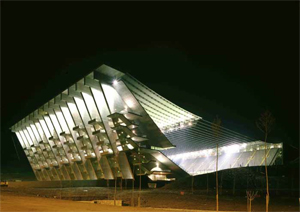 His stadium in Braga, Portugal was the site of European soccer championships when it was completed in 2004, and gained high praise. Nearly a million and a half cubic yards of granite were blasted from the site and crushed to make concrete for the stadium. Precise explosions of a mountain side created a hundred foot high granite face that terminates one end of the stadium. Souto de Moura describes this coexistence of the natural with the man made construction as good architecture. In his own words, “It was a drama to break down the mountain and make concrete from the stone.” The jury citation calls this work, “...muscular, monumental and very much at home within its powerful landscape.” His stadium in Braga, Portugal was the site of European soccer championships when it was completed in 2004, and gained high praise. Nearly a million and a half cubic yards of granite were blasted from the site and crushed to make concrete for the stadium. Precise explosions of a mountain side created a hundred foot high granite face that terminates one end of the stadium. Souto de Moura describes this coexistence of the natural with the man made construction as good architecture. In his own words, “It was a drama to break down the mountain and make concrete from the stone.” The jury citation calls this work, “...muscular, monumental and very much at home within its powerful landscape.”
Another of his projects, the Burgo Tower, completed in 2007, constructed in the city where he lives and works, Porto, Portugal, is described by the jury as, “...two buildings side by side, one vertical and one horizontal with different scales, in dialogue with each other and the urban landscape.” Souto de Moura commented that “a twenty story office tower is an unusual project for me. I began my career building single family houses.”
Souto de Moura has designed numerous residences, one of which, House Number Two builtinthetownof BomJesus,wassingledoutbythejuryforits“uncommonrichnessthroughout the subtle banding in the concrete of its exterior walls.” Souto de Moura’s comments on the project: “Because the site was a fairly steep hill overlooking the city of Braga, we decided not to produce a large volume resting on a hilltop. Instead, we made the construction on five terraces with retainer walls, with a different function defined for each terrace-- fruit trees on the lowest level, a swimming pool on the next, the main parts of the house on the next, bedrooms on the fourth, and on the top, we planted a forest.”
Another project in his native city, Porto, is the Cultural Center completed in 1991, which the jury describes as “a testament to his ability to combine materials expressively.” He used copper, stone, concrete and wood.
A convent and monastery in a mountainous terrain near Amares, Portugal, called Santa Maria do Bouro was a project for Souto de Moura from 1989 to 1997, in which he converted the centuries old structure into a state inn. He recalls the walls were over four feet thick. Originally built in the 12th century, the jury declares in their citation that Souto de Moura “has created spaces that are both consistent with their history and modern in conception.”
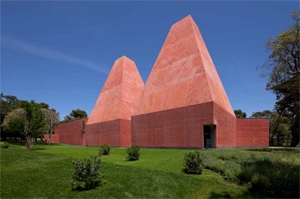 Souto de Moura, in describing another of his projects, has said, “After the painter Paulo Regio chose me as her architect, I was lucky to be able to choose the site. It was a fenced off forest with some open space in the middle. On the basis of the elevation of the trees, I proposed a set of volumes of varying heights. Developing this play between the artificial and nature helped define the exterior color, red concrete, a color in opposition to the green forest. Two large pyramids along the entrance axis prevent the project from being a neutral sum of boxes.” ThePauloRegioMuseumcompletedin2008,iscitedbythejuryas“bothcivicand intimate, and so appropriate for the display of art.” Souto de Moura, in describing another of his projects, has said, “After the painter Paulo Regio chose me as her architect, I was lucky to be able to choose the site. It was a fenced off forest with some open space in the middle. On the basis of the elevation of the trees, I proposed a set of volumes of varying heights. Developing this play between the artificial and nature helped define the exterior color, red concrete, a color in opposition to the green forest. Two large pyramids along the entrance axis prevent the project from being a neutral sum of boxes.” ThePauloRegioMuseumcompletedin2008,iscitedbythejuryas“bothcivicand intimate, and so appropriate for the display of art.”
Often described as a “Miesian architect,” the jury acknowledged this influence with the words, “He has the confidence to use stone that is a thousand years old or to take inspiration from a modern detail by Mies van der Rohe.”
Upon learning that he was being honored, Souto de Moura had this reaction: “When I received the phone call telling me I was to be the Pritzker Laureate, I could hardly believe it. Then I received confirmation that it was actually true, and I came to realize what a great honor this is. The fact that this is the second time a Portuguese architect has been chosen makes it even more important.”
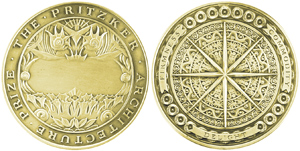 The distinguished jury that selected the 2011 Pritzker Laureate consists of its chairman, The Lord Palumbo, internationally known architectural patron of London, chairman of the trustees, Serpentine Gallery, former chairman of the Arts Council of Great Britain, former chairman of the Tate Gallery Foundation, and former trustee of the Mies van der Rohe Archive at the Museum of Modern Art, New York; and alphabetically: Alejandro Aravena, architect and executive director of Elemental in Santiago, Chile; Carlos Jimenez, professor, Rice University School of Architecture, principal, Carlos Jimenez Studio in Houston, Texas; Glenn Murcutt, architect and 2002 Pritzker Laureate of Sydney, Australia; Juhani Pallasmaa, architect, professor and author of Helsinki, Finland; Renzo Piano, architect and 1998 Pritzker Laureate, of Paris, France and Genoa, Italy; and Karen Stein, writer, editor and architectural consultant in New York. Martha Thorne, associate dean for external relations, IE School of Architecture, Madrid, Spain, is the executive director of the prize. The distinguished jury that selected the 2011 Pritzker Laureate consists of its chairman, The Lord Palumbo, internationally known architectural patron of London, chairman of the trustees, Serpentine Gallery, former chairman of the Arts Council of Great Britain, former chairman of the Tate Gallery Foundation, and former trustee of the Mies van der Rohe Archive at the Museum of Modern Art, New York; and alphabetically: Alejandro Aravena, architect and executive director of Elemental in Santiago, Chile; Carlos Jimenez, professor, Rice University School of Architecture, principal, Carlos Jimenez Studio in Houston, Texas; Glenn Murcutt, architect and 2002 Pritzker Laureate of Sydney, Australia; Juhani Pallasmaa, architect, professor and author of Helsinki, Finland; Renzo Piano, architect and 1998 Pritzker Laureate, of Paris, France and Genoa, Italy; and Karen Stein, writer, editor and architectural consultant in New York. Martha Thorne, associate dean for external relations, IE School of Architecture, Madrid, Spain, is the executive director of the prize.
In addition to the previous laureates already mentioned, the late Philip Johnson was the first Pritzker Laureate in 1979. The late Luis Barragán of Mexico was named in 1980. The late James Stirling of the United Kingdom was elected in 1981, Kevin Roche in 1982, Ieoh Ming Pei in 1983, and Richard Meier in 1984. Hans Hollein of Austria was the 1985 Laureate. Gottfried Böhm of Germany received the prize in 1986. Robert Venturi received the honor in 1991, and Alvaro Siza of Portugal in 1992. Christian de Portzamparc of France was elected Pritzker Laureate in 1994. Frank Gehry of the United States was the recipient in 1989, the late Aldo Rossi of Italy in 1990. In 1996, Rafael Moneo of Spain was the Laureate; in 1997 the late Sverre Fehn of Norway; in 1998 Renzo Piano of Italy, in 1999 Sir Norman Foster of theUK,andin2000,RemKoolhaasoftheNetherlands. AustralianGlennMurcuttreceived the prize in 2002. The late Jørn Utzon of Denmark was honored in 2003; Zaha Hadid of the UK in 2004; and Thom Mayne of the United States in 2005. Paulo Mendes da Rocha of Brazil was the Laureate in 2006, and Richard Rogers received the prize in 2007. Jean Nouvel of France was the Laureate in 2008. In 2009, Peter Zumthor of Switzerland received the award. Last year, two Japanese architects were honored, partners Kazuyo Sejima and Ryue Nishizawa of SANAA, Inc.
The field of architecture was chosen by the Pritzker family because of their keen interest in building due to their involvement with developing the Hyatt Hotels around the world; and because architecture was a creative endeavor not included in the Nobel Prizes. The procedures were modeled after the Nobels, with the final selection being made by the international jury with all deliberations and voting in secret. Nominations are continuous from year to year with hundreds of nominees from countries all around the world being considered each year. The site for this year’s ceremony, the Andrew W. Mellon Auditorium was erected between 1932 and 1934, and is part of a large nine-building office complex called the Federal Triangle. At the time of its construction, it was the largest government owned assembly space in the city, and considered as one of the most magnificent settings for government ceremonies. It was designed by San Francisco based architect Arthur Brown, Jr. Originally called the Departmental Auditorium, it was renamed in 1987, the Andrew W. Mellon Auditorium.
Citation from the Jury
During the past three decades, Portuguese architect Eduardo Souto de Moura has produced a body of work that is of our time but also carries echoes of architectural traditions. His oeuvre is convincing proof of modern idiom’s expressive potential and adaptability to distinct local situations. Always mindful of context, understood in the broadest sense, and grounded in place, time, and function, Souto de Moura’s architecture reinforces a sense of history while expanding the range of contemporary expression.
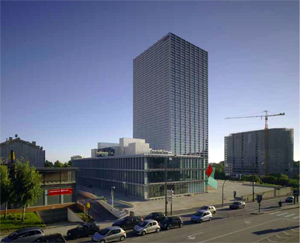 Already in his first works, undertaken in the 1980s, Souto de Moura had a consistent approach that never adopted the trends of the moment. At that time, he was intensely out of fashion, having developed his individual path during the height of postmodernism. As we look back today, the early buildings may seem normal, but we must remember how brave they really were back then. Already in his first works, undertaken in the 1980s, Souto de Moura had a consistent approach that never adopted the trends of the moment. At that time, he was intensely out of fashion, having developed his individual path during the height of postmodernism. As we look back today, the early buildings may seem normal, but we must remember how brave they really were back then.
The versatility of his practice is evident in the variety of commissions he has undertaken with success. He is capable of designing from domestic to urban scale. Many of his early works in the 1980s were single-family houses and remain among his seminal works. However, the scope of his work has expanded: the Braga Municipal Stadium, Portugal, designed in 2000 is muscular, monumental and very much at home within its powerful landscape; the Burgo Tower, Portugal, designed at the beginning of the 1990s and built a decade later, consists of two buildings side by side, one vertical and one horizontal with different scales, in dialogue with each other and the urban landscape; the Paulo Regio Museum, completed in 2008, a grouping of volumes interspersed in the trees at its site in Cascais, Portugal, is both civic and intimate, and so appropriate for the display of art.
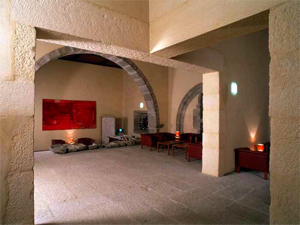 In their apparent formal simplicity, de Souto de Moura’s buildings weave together complex references to the characteristics of the region, landscape, site, and wider architectural history. Often simple geometries are underlined through interplay of solid and void or light and shadow. The restoration and adaptation of the Santa Maria Do Bouro Monastery into a hotel has taken a building from ruble to reinterpretation. Souto de Moura has created spaces that are both consistent with their history and modern in conception. The effectiveness of his works usually stems from the juxtaposition of elements and concepts. His unique capacity to embrace reality while employing abstraction creates an architectural language that transforms physicality into the metaphysical. In their apparent formal simplicity, de Souto de Moura’s buildings weave together complex references to the characteristics of the region, landscape, site, and wider architectural history. Often simple geometries are underlined through interplay of solid and void or light and shadow. The restoration and adaptation of the Santa Maria Do Bouro Monastery into a hotel has taken a building from ruble to reinterpretation. Souto de Moura has created spaces that are both consistent with their history and modern in conception. The effectiveness of his works usually stems from the juxtaposition of elements and concepts. His unique capacity to embrace reality while employing abstraction creates an architectural language that transforms physicality into the metaphysical.
Souto de Moura is an architect fascinated by the beauty and authenticity of materials. His knowledge of construction and skill with materials are always visible in his buildings. He has the confidence to use stone that is a thousand years old or to take inspiration from a modern detail by Mies van der Rohe. The thoughtful use of copper, stone, concrete and wood in the Cultural Center in Porto, completed in 1991, for example, is a testament to his ability to combine materials expressively. By modifying pavements, textures, pathways and public spaces for the subway system of Porto, he has granted new significance to public spaces. House Number Two, built in the town of Bom Jesus, Portugal, in 2007, has achieved an uncommon richness through the subtle banding in the concrete of its exterior walls.
Eduardo Souto de Moura’s architecture it is not obvious, frivolous, or picturesque. It is imbued with intelligence and seriousness. His work requires an intense encounter not a quick glance. And like poetry, it is able to communicate emotionally to those who take the time to listen. His buildings have a unique ability to convey seemingly conflicting characteristics—power and modesty, bravado and subtlety, bold public authority and sense of intimacy—at the same time. For architecture that appears effortless, serene, and simple, and for the care and poetry that permeates each project, Eduardo Souto de Moura receives the 2011 Pritzker Architecture Prize.
THE JURY
CHAIRMAN
The Lord Palumbo
Architectural Patron, Chairman of the Trustees, Serpentine Gallery
Former Chairman of the Arts Council of Great Britain
Former Chairman of the Tate Gallery Foundation
Former Trustee of the Mies van der Rohe Archive at the Museum of Modern Art, New York London, England
Alejandro Aravena
Architect and Executive Director of Elemental
Santiago, Chile
Carlos Jimenez
Professor, Rice University School of Architecture
Principal, Carlos Jimenez Studio
Houston, Texas
Glenn Murcutt
Architect and Pritzker Laureate 2002
Sydney, Australia
Juhani Pallasmaa
Architect, Professor and Author
Helsinki, Finland
Renzo Piano
Architect and Pritzker Laureate 1998
Paris, France and Genoa, Italy
Karen Stein
Writer, editor and architectural consultant
New York, New York
Executive Director
Martha Thorne
Associate Dean for External Relations
IE School of Architecture
Madrid, Spain
Ricerche dal database di Architectour.net

Pritzker Prize |
|
 |
  |
 |
|
|